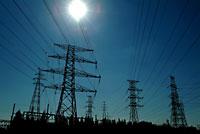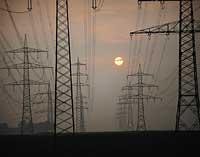What clarified the blackout
2004/08/04 Galarraga Aiestaran, Ana - Elhuyar Zientzia

The August 14, 2003 blackout was the largest in North America. 50 million inhabitants of the US and Canada remained without light for 30 hours. This made the night even blacker, but during the day light increased. In fact, visibility in some places was 40 km higher than otherwise.
Researchers are surprised by the scope of the conclusions. For example, air pollution decreased much more than expected: ozone concentration decreased by half, sulfur dioxide decreased by 90% and the typical fog of the Pennsylvania area disappeared.

To collect this data, they returned to the places with the highest production of electricity and measured the concentrations of the main pollutants in the low atmosphere. The results have now been published in the journal Geophysical Research Letters.
In addition, several conclusions have been drawn. Researchers believe that air quality is more affected by pollutants emitted at several meters above ground level, that is, chimney fumes are more harmful than cars. On the other hand, as old electrical production facilities are replaced by new ones, air quality is expected to be better, as the new ones do not emit so much pollutants.

Gai honi buruzko eduki gehiago
Elhuyarrek garatutako teknologia






